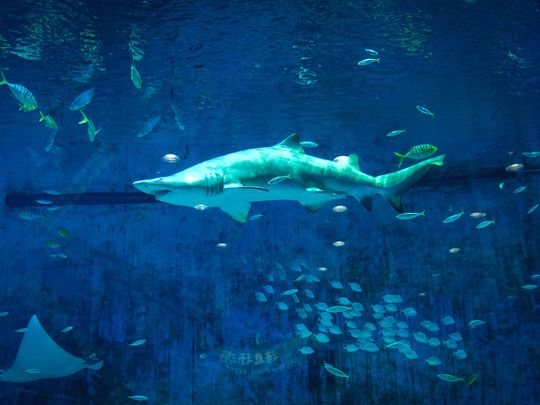
With documentaries on sharks and horror movies like Jaws, you probably already know that sharks have a seriously deadly bite. But did you know that some sharks can glow in the dark?
Click start to play today’s Crossword, a fun exercise in identifying sharks, either by their description or their name’s homograph (a word that is spelled the same but refers to something completely different).
In a February 2021 study, published in the Switzerland-based journal Frontiers in Medical Science, shark researchers working off the coast of New Zealand found three species of deep-sea shark that are bioluminescent. This means they produce a blue-green light through specialised cells in their skin, or in other words, they glow!
One of the species – the kitefin shark – grows to nearly six feet in length, making it the largest known bioluminescent vertebrate. Other sharks that light up include the blackbelly lanternshark and southern lanternshark, all of which live in the ocean’s twilight zone – a depth of 660 to 3,300 feet!
Little is known about these creatures’ lifestyles and biology, and this latest study threw up even more questions for scientists, who continue to be puzzled as to why and how so many creatures that live in the deep have developed a natural glow. According to a March 2021 article in the National Geographic, three-quarters of all deep-sea creatures are bioluminescent.
In the case of the three species, the sharks all had large concentrations of photocytes (cells that specialise in catalysing enzymes to produce light) on their underbellies. In the ocean’s twilight zone, animals hide their silhouette from predators lurking below by producing enough light to match their environment. It is thought that the sharks did this too, in an attempt to camouflage themselves and hide from other, larger sharks. But scientists are still figuring out why kitefin sharks were found with a dense concentration of photocytes on their dorsal fins, too. Some think it may be a way for them to communicate with each other.
The enlightening (pun intended) study goes to show how little we know about the ocean’s inhabitants – especially those living in its hidden depths.
Play today’s Crossword and let us know if you enjoyed it at games@gulfnews.com.








